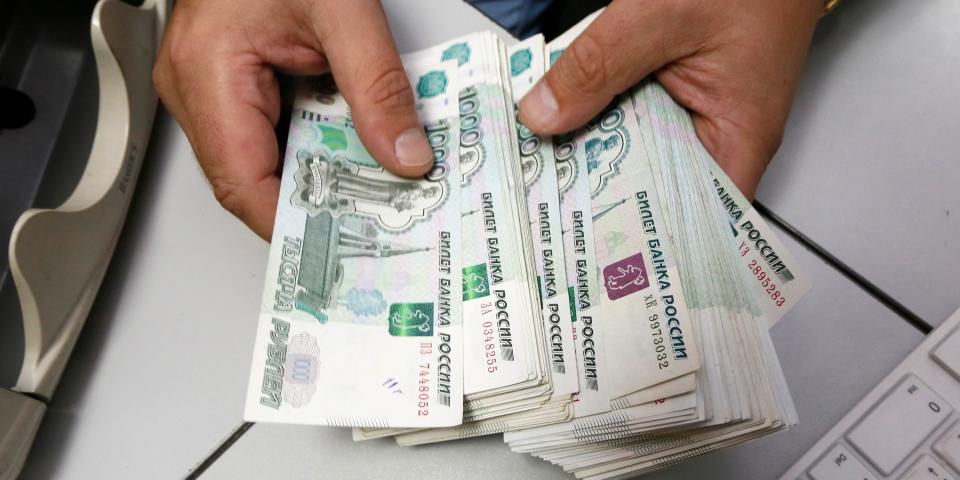Russian ruble sinks to level that previously triggered emergency measures from Moscow

The Russian ruble fell past the 100-per-dollar threshold early Tuesday.
When it last broke this barrier in mid-August, Russia's central bank hiked rates sharply.
The ruble's late slide comes as Russia's balance of payments has deteriorated.
The ruble is once again retesting summer lows, falling past the 100-per-dollar barrier that has been a major concern in the past.
The currency fell to 100.255 against the greenback early Tuesday, though it has since edged back up to a 99.55 level.
When this triple-digit threshold was last crossed in mid-August, the central bank took emergency measures and hiked interest rates sharply to 12%. Later, the ruble's September slide triggered another rate increase to 13%. In early September, the central bank also boosted foreign currency sales to help stem ruble volatility.
While the currency did recover in the immediate aftermath of the emergency measures, the latest decline comes as Russia has suffered uneven trade dynamics.
A recovery in imports has lifted demand for hard currencies in the country, but export revenue has largely dropped amid international sanctions. Between January and August, Russia's current account surplus fell 86% compared to the same period in 2022.
The ruble has also weakened alongside other global currencies as soaring US bond yields have strengthened the dollar.
Meanwhile, the Kremlin's finance ministry has pushed for capital controls to prop up the ruble and has clashed with the central bank, which has argued against further intervention.
According to Reuters, Bank of Russia Governor Elvira Nabiullina has opposed stricter controls and criticized the finance ministry's idea to create separate onshore and offshore ruble exchange rates, similar to what China does with the yuan.
Read the original article on Business Insider
